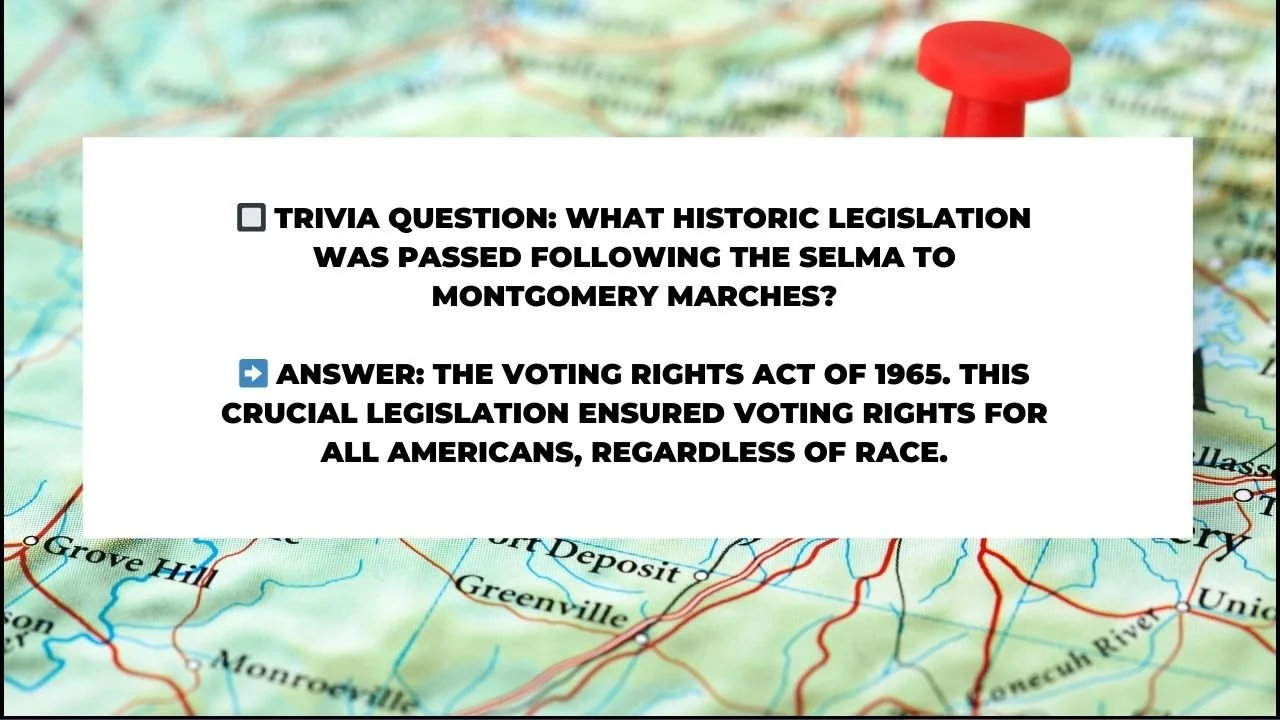Montgomery: Resilience, Progress, and the Spirit of the Civil Rights Movement
When I think of Montgomery, Alabama, I think of civil rights. I’ve passed through this city several times on my way to the southern parts of the state. At first glance, Montgomery might not catch your eye from the highway—the old, towering buildings and smoke stacks hint at a storied past. The initial impression can feel a bit somber, with its weathered streets and quiet demeanor.
But Montgomery is a city that rewards those who dig deeper. Beneath its surface lies a powerful legacy of resilience, transformation, and hope. As Alabama’s capital, Montgomery stands as both a symbol of change and a testament to the strength of those who fought for equality.
Here, you’ll find the black granite Civil Rights Memorial, a poignant tribute to the heroes of the Civil Rights Movement, alongside an exhibition center that tells their stories. The echoes of history resonate in the Dexter Avenue Baptist Church, where Dr. Martin Luther King Jr. preached and organized the Montgomery Bus Boycott. Even the Alabama State Capitol, with its grand dome and 1850s architecture, reminds visitors of the turbulent and triumphant moments that shaped the nation.
Beyond its history, Montgomery continues to grow and evolve, carrying forward the spirit of those who stood for justice. Montgomery’s Civil Rights Legacy
Montgomery holds a distinctive place in American history as the birthplace of some of the most defining moments in the fight for racial equality. During the 1950s and 60s, the city became a national focal point for Civil Rights activism:
Montgomery Bus Boycott (1955-1956): Sparked by Rosa Parks’ courageous refusal to give up her seat, the boycott was a pivotal event led by activists like Dr. Martin Luther King Jr. and E.D. Nixon. This 381-day peaceful protest crippled the city's transit system and culminated in a Supreme Court ruling declaring bus segregation unconstitutional. It remains a testament to the power of collective action and the impact of sustained, nonviolent resistance.
The Selma to Montgomery Marches (1965): These marches drew national attention to voting rights issues and highlighted the brutal suppression Black people faced in their pursuit of equal rights. “Bloody Sunday,” in particular, shocked the world as peaceful protestors were met with violent opposition. But their courage led to the passage of the Voting Rights Act of 1965, a significant victory for civil rights.
Highlander Folk School: Though based in Tennessee, this school had a considerable influence on Montgomery’s Civil Rights Movement. Dr. King, Rosa Parks, and others attended training workshops here, learning organizing strategies that they later implemented in Montgomery.
What Montgomery Was Then
Montgomery was a city of dual realities for African Americans. While it became a catalyst for change, the African American community also faced intense discrimination, segregation, and limited access to basic resources. The city’s streets echoed with both the weight of systemic oppression and the voices of those daring to demand justice. Life under Jim Crow laws meant that public facilities were separate and far from equal, and Black citizens faced barriers in voting, employment, and education.
Yet, despite these hardships, African Americans in Montgomery demonstrated unbreakable strength and resilience. The churches, schools, and communities they built became safe havens for cultural expression and communal support. Community members pooled their resources, often sacrificing their safety and livelihood to pursue equality and secure better futures for the next generation.
Montgomery Today: Embracing Its Legacy and Moving Forward
Montgomery today reflects both its historical legacy and a commitment to progress. As visitors walk through the city, they encounter memorials and museums that honor the lives and legacies of those who fought for justice. Places like the National Memorial for Peace and Justice and the Civil Rights Memorial Center remind us of the journey toward equality and the ongoing battle against racial injustice.
The Legacy Museum, founded by the Equal Justice Initiative (EJI), explores the historical trauma of enslavement and racial injustice. Meanwhile, EJI’s Lynching Memorial stands as a solemn tribute to the lives lost to racial violence. These sites serve as powerful reminders of both Montgomery’s painful past and the resilience of its African American community.
In neighborhoods, schools, and local businesses, you can feel the spirit of revival. Organizations are actively working to uplift communities of color, supporting Black entrepreneurship, advocating for educational equity, and preserving the city's African American history. Montgomery now has Black-owned businesses thriving across various sectors, from restaurants and boutiques to tech startups, showing that resilience continues to shape the city’s evolution.
Inspiring Positivity: Lessons from Montgomery
Montgomery’s story is more than a history of hardship; it’s a testament to the power of collective resilience and hope. This city reminds us that even in the darkest times, there is strength in unity. As we look to Montgomery’s past, we’re inspired by the courage of individuals who changed history through seemingly small acts—refusing to give up a bus seat, marching across a bridge, or casting a ballot in defiance of threats.
Montgomery’s journey offers a powerful reminder to all of us:
Never Underestimate the Power of Small Actions: Each person can contribute to change, no matter how small their actions may seem at the moment.
The Importance of Community: Success in the Civil Rights Movement was driven by solidarity. Community support creates a foundation for achieving any meaningful change.
Resilience Is Key: Despite facing unimaginable challenges, those who came before us did not give up. Today, Montgomery’s progress shows us that persistence, even through adversity, is a transformative force.
Montgomery: A City with Eyes on the Future
Montgomery has grown beyond its role as a battleground for civil rights; it has become a beacon for inclusive growth, education, and unity. It continues to honor its past while moving toward a future marked by increased diversity, economic progress, and cultural richness.
As we reflect on Montgomery’s history and look toward Black History Month, let’s take inspiration from the spirit of this city—a city that transformed struggle into change and adversity into triumph. The journey of Montgomery reminds us that the road to justice is long but powerful, and that each step we take has the potential to inspire generations to come.











